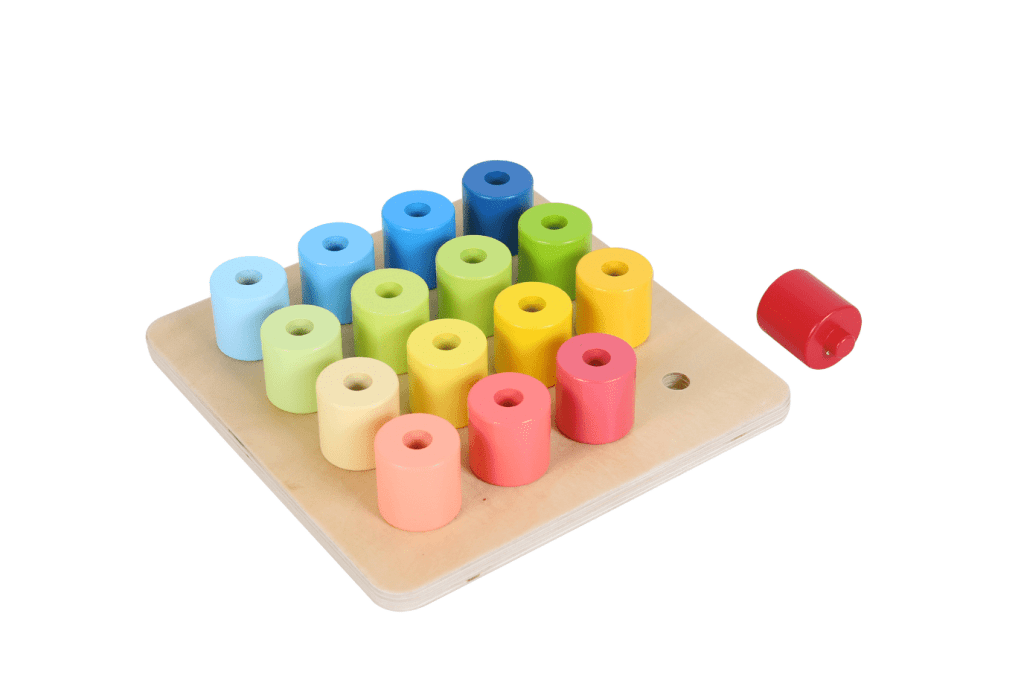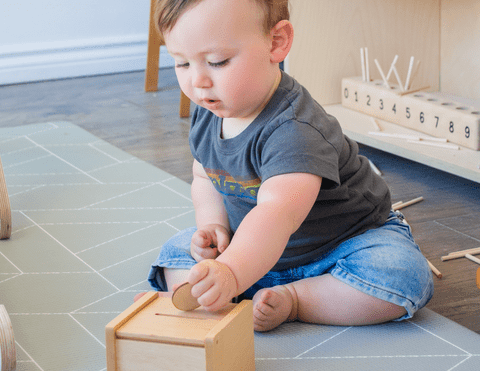Menu
-
-
Shop Holiday Items
-
Shop Gifts By Age
- Gifts For a 0-6 Month Old
- Gifts For A 6-12 Month Old
- Gifts For A One Year Old
- Gifts For A Two Year Old
- Gifts For A Three Year Old
- Gifts For A Four Year Old
- Gifts For A Five Year Old
- Gifts For A Six Year Old
- Gifts For A Seven Year Old
- Gifts For An Eight Year Old
- Gifts For A Nine Year Old
- Gifts For A Ten Year Old
-
Shop Gifts By Budget
- New Arrivals
-
Toys
- Large Active Toys
- Animal Toys
- Arts & Crafts
- Award-Winning Toys
- Bath Toys
- Birthday Wishlists
- Building Toys
- Cars, Trains, & Trucks
- Games
- Instruments
- Loose Parts Play
- Loot Bag Toys
- Made in Canada
- Outdoor Toys
- Pretend Play
- Puzzles
- Sensory And Fidget Toys
- Sensory Bin Tools & Fillers
- STEM Toys & Activities
- Toronto-Themed Gifts
- Travel Toys
- Wooden Toys
- Waiting Room Toys & Furniture
-
Montessori Materials
- Montessori At-Home Program
-
Montessori Furniture
-
Bundles & Sales
-
Books
-
Shop By Age
-
Shop By Brand
- Brands A-F
- Brands G-L
-
Brands M-R
- MagicPlaybook
- Magna Tiles
- Make Believe Ideas
- Makedo
- Manhattan Toys
- Math for Love
- Milaniwood
- MindWare
- Mojo Toys
- Moluk
- Moulin Roty
- Native Northwest
- nic
- Nienhuis
- Ooly
- Opinel
- Ostheimer
- Papoose
- Peaceable Kingdom
- Plan Toys
- Plus-Plus
- Preschool Collection Watches and Timers
- Ravensburger Puzzles
- Real Life Pages
- Brands S-Z
-
- 866-901-4696
- Gift Registry
- Login


17 Of The Most Popular Montessori Activities in the Toddler Classroom
5 min read
If you're new to Montessori, or just looking to add new activities to your child's shelf, the options can sometimes feel overwhelming.
It can be hard to know which activities your child will end up spending hours engaged in... and which will collect dust on the shelf.
Katie, the Montessori teacher who runs our at-home program, has put together the 17 most popular Montessori activities in her toddler classroom throughout the years.
These are the ones that stayed on the shelf throughout the school year and never rotated out because they were used so frequently.
Practical Life Activities
These are the real life tasks that adults perform every day. While they're often a chore to us, children usually find these activities immensely enjoyable.
Here are the most popular ones from Katie's classroom:
Scooping Activities - this activity is a great way to prepare the child for food preparation and serving.
It's so easy to setup. Offer two bowls, a spoon, and a material (dried beans, pom poms, cereal) to transfer from one bowl to another. In the classroom, the material to be scooped would change, spoon would change, and both would gradually get smaller throughout the year to keep it engaging.

Tong transfer - to keep this activity interesting throughout the year, the material to be transferred would change and gradually get smaller. At home, you can start with larger pom poms, moving to smaller pom poms, then marbles, and eventually use chopsticks instead of tongs.

Window Washing - Fill a small spray bottle with water only and provide a squeegee or rag. Demonstrate how to spray the water on the window and then wipe it clean. It's a fun indoor or outdoor activity and was used every single day in the classroom.

Watering Plants - the plants in the classroom were notoriously over-watered because children love to do this activity so much. At home, you can even take your child to the nursery to pick out their own plant to care for.

Washing Dishes - at home, you can start with plates and bowls, then add cups, cutlery, and food prep materials.
Mopping - always at least one child who wanted to mop all day. At home, you can modify a Swiffer to remove the middle pole to make it child size.

Montessori Activities
Wooden Fruit and Vegetable Cutting Activity - This is good for early, safe introduction or just extra practice for the real life activity of prepping fruits and vegetables. Although it's not a substitute for the real thing, it can help a child refine their grip on a knife and the movements needed to cut.
Peg Boards - children would work to place each peg in the board, eventually they would start to build up. We would encourage them to work with it on the floor once they were interested in building towers because they could eventually build a tower as tall as they are (or taller). Once they couldn’t reach anymore, we would talk about what they could do to make themselves taller and they’d go get the stool and keep building (while the teacher helped to hold up the peg tower).

Beads - the set I linked to is a great set because the beads are large but there's still quite a few in the set so it can be used from ~18 months - 3 years. Start by offering just 1-2 of the largest beads, gradually adding more. Once the children had mastered larger beads, they got smaller as the year progressed.

Slotted Box with Chips - This activity is a great way to develop concentration through repetitive movements and explores volume. Begin by offering just 1 chip, gradually adding in more. When the child is older, you can experiment with offering real coins and experimenting with how many you can add to fill it.
Not sure if your child will enjoy this? You can DIY it with a yogurt container and poker chips to try it out.

Geometric Sorting Board - The great thing about this activity is that there is a control of error within it - all pieces can fit onto the puzzle only if they're placed correctly.
It's a challenging puzzle at first because there's a lot of pieces. Children would explore this work creatively every single year. They’d look through the holes in the shapes, create patterns with the shapes on the table, stack them on or off the board, build their vocabulary/shape recognition, and sort the shapes off of the board. While it seems like an activity with limited use, children have shown that's not the case.
Open-Ended Activities
More traditional Montessori classrooms don't always offer open-ended activities but items like blocks or animal figures can be great for developing the imagination.
Blocks - blocks can be offered starting as young as 8 months and will be engaging for years. You can start by offering just a few blocks, building a tower for your infant to knock down, gradually adding more blocks. In the classroom, Katie found the children eventually began to combine blocks with language materials (basket of animals or cars, etc.) for more creative play.

Water Blocks - children would use these as blocks to build or to look through in the classroom or out the window. They also invited social interaction because they could be used by more than 1 child.

Baskets of Animals - Animal figures are a great invitation for imaginative play. Having a few different sets and rotating them out every few weeks/month will keep them interesting.
Sensory Activities
Sensory activities are always great in the infant and toddler years because this is an age where children enjoy using all of their senses to learn about the world around them.
Here's the 3 most popular from Katie's classroom:
Stereognostic Bags - if you're not sure what these are, click here to check out this post. In the classroom, the materials would be rotated every few weeks/month. With the amount of potential variations in this activity, it kept it pretty novel all year. For more ideas of what to put in them, check out the post I linked to above.

Sensory Bottle - this is simply a water bottle or some other clear bottle you can fill with interesting items and sometimes liquid. Popular items to include are coloured water, glitter, beads, pom poms, or items from nature.
These sensory tubes are a great reusable option > https://themontessoriroom.com/products/sensory-tubes
Play Dough - Offer play dough and very variety of tools (rolling pins, cookie cutters, scissors, etc.) and loose parts (gems, animals, etc.) to keep this activity interesting all year.
Below is a setup from a Valentine's day activity posted previously but you can really offer any tools or parts to pique your child's interest.
Remember, not every child will enjoy all the activities.
Do as the Montessorians do - observe your child and pay attention to their interests, the movements they tend to repeat, and the skills they're focused on developing.
That will guide you to choosing the activities your child will enjoy the most.
Join Our Montessori Community
Sign up to get weekly activities, free printables, Montessori parenting guidance, and so much more.
Plus, get $10 off your first order of $100+.
Like this article? Get new articles, weekly activities, free printables, Montessori parenting guidance, and so much more.
One mom recently shared:
"Your newsletter is always SO great. It is one of the few I open and read weekly. You provide so much value. Thank you!"






![[FREE PRINTABLE] New Winter Play Dough Mats](http://themontessoriroom.com/cdn/shop/articles/Katie_-_Blog_Post_Header_Images_1277_x_957_px_6_1600x.png?v=1765901378)
